I live just a ten-minute drive from the world headquarters of Xero shoes, but I had never heard about them until I re-read Christopher McDougall’s 2009 best-seller “Born to Run” and started searching for terms like “huarache”, “barefoot running or zero drop”, a couple of years ago.
I was impressed with their guarantee and online reviews, so I gave the Xero Prio a whirl in January 2018.
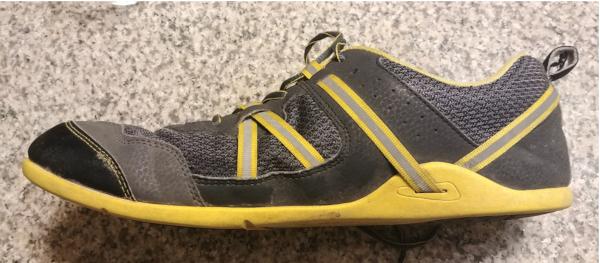
The first thing I noticed out of the box was that the shoes looked sturdily put together, for something so minimalist. You can certainly roll them up and tuck them into themselves, and they pack down to about nothing.
They weigh half of an average running shoe. The stitching is even, and the materials seem tough. They are made of “vegan-friendly materials,” according to Xero’s website.
The Prio is double-stitched at the toe and instep, just where it needs to be, and there is just enough reinforcement at the toe. The reflective strips are thoughtfully placed to add a little safety at night runs or road crossings.
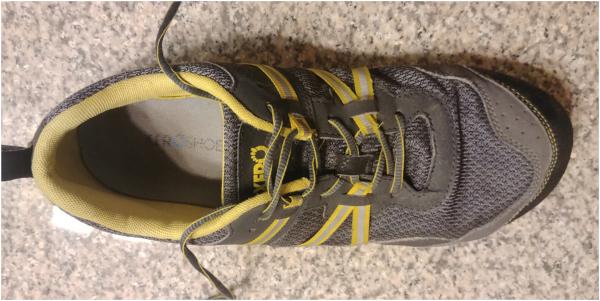
The feel
The Prio is a little narrow through the midfoot, with a bit more generous space in the toe box. Their soles wrap just a little into the uppers. Their width seems widely adjustable. Thanks to a strapping system adapted from Xero’s sandals.
The moment I slipped these on, I immediately felt everything underfoot. Not in an evil, poky way, but I was instantly aware of surfaces. After the cushy feel and 10mm drop of the Brooks GTS that I had become addicted to, this was an entirely new way of approaching running.
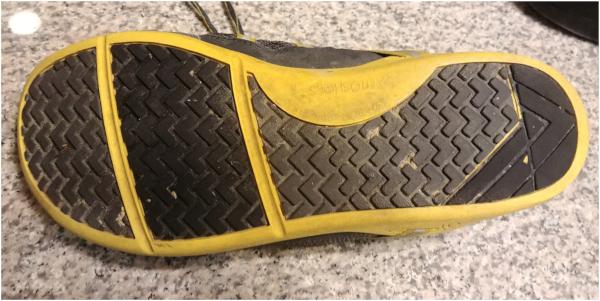
I began with a few walks and worked to shorter runs. The result was sore calves and a shorter stride with a natural tendency towards mid- to forefoot strikes. I have never run with them regularly, but they have settled into a once-a-week rotation of walks and runs that seems to challenge entirely different muscles.
Why review in 2019?
Durable? Yes, it was an easy 300 miles with little discernible wear. The reflective surface has rubbed off a little from the outside of the heels, but that is all of the cosmetic damage they have sustained.
There’s no foam to break down, and the tread seems to be indefatigable. There’s no support and scant cushioning (an optional 2mm insole), so the shoes absorb little shock. They require different running technique, which means less stress on the shoe and rethinking just mindlessly pounding pavement.
The few millimeters of internal footbed do seem to be compressing a little, but that’s the only real wear point I can detect so far. I stopped counting, so I won’t test their 5000-mile sole guarantee.
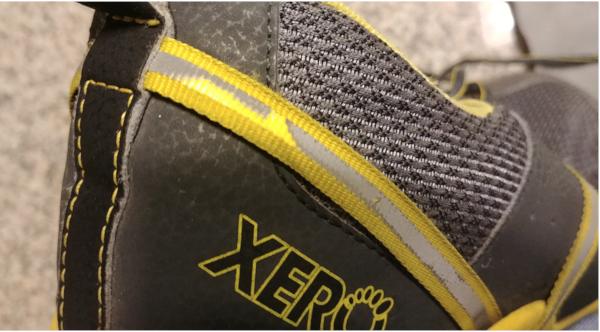
Being naturally hard on footwear, I unintentionally tested their warranty a month into owning the Prio. I laced them a bit too tightly around my low-volume forefoot and ripped through the rubber slot holding the straps.
Their office staff was responsive and impressed that I had managed to stress the shoes in that way. They immediately offered to replace them, despite my admission that it was my own damn fault.
I think the shoes were so lightweight that I felt like I might lose them if I didn’t tie them on securely. Loosening up a bit has not resulted in any shoe ejection.
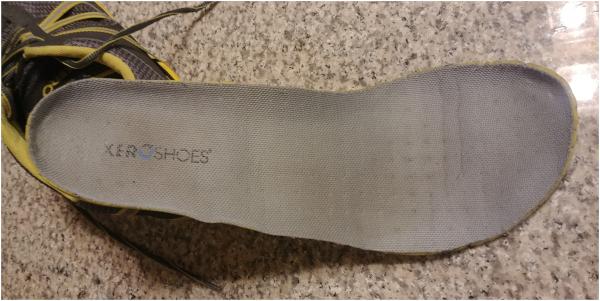
So why review them now? The design of the Prio has not changed in the past year. Obviously, they never became the go-to shoes I have since replaced four or five times. I don’t wear them for a lot of miles, but I still seem to reach for them in a lot of situations.
After I finally understood not to cinch down the straps, their gentle strapping system (inspired by those huaraches) has proven to be comfortable. They ironically work well as recovery shoes when the dogs are swollen and barking from too much running on those cushy cousins the folks at Xero were hoping to replace.
Review by Daniel


![XERO SHOES情報
「ほぼ裸足」の履き心地。
持ち運びに便利!!
残りわずかになりました。
[Jessie]6,500円+tax
コーラル
women's 6(23cm相当)
women's 7(24cm相当)
セージ
women's 8(25cm相当)
women's 10(27cm相当)
ブラック
women's 6(23cm相当)
women's 9(26cm相当)
[GENESIS]5,800+税
men's 10(28cm相当) 気になる方は是非お試しください^_^
#トリッパーズ
#tripperswtrc
#trippers
#トレラン
#トレイルランニング
#xeroshoes
#ゼロシューズ
](https://optimaexpert.com/wp-content/plugins/instagram-feed-pro/img/placeholder.png)













Matt - April 12, 2019 @ 04:35
So, Xero Shoes are terrific. I wear them pretty much every day. They’re the best.